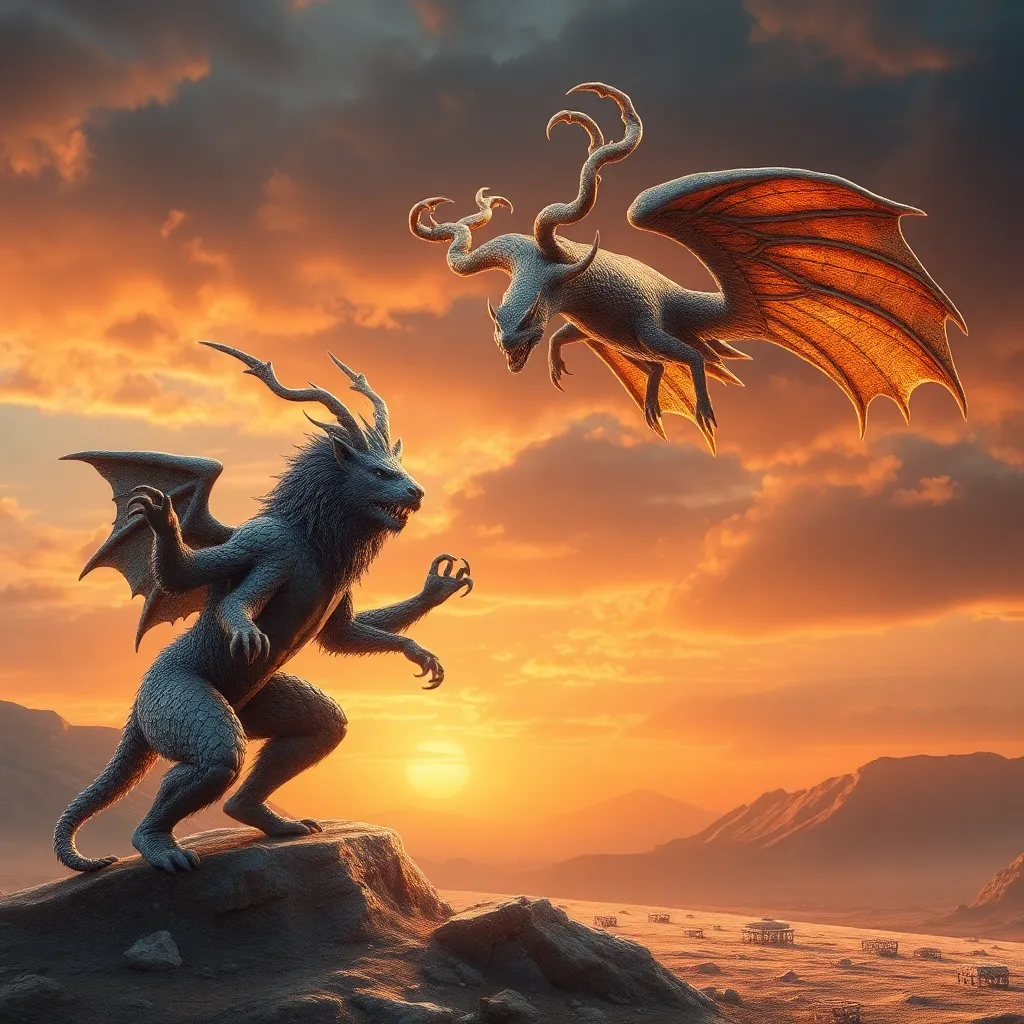Exploring the Origins of Mythological Creatures in Ancient Greek Lore
I. Introduction
Mythological creatures are integral to ancient Greek culture, representing the complex interactions between humanity, nature, and the divine. These beings serve as symbols of various human experiences, fears, and aspirations, encapsulating moral lessons and cultural values. This article aims to explore the origins, significance, and evolution of these mythological creatures within the context of ancient Greek lore.
The structure of this article will guide you through the historical context of Greek mythology, the major sources that document these tales, the classification of various mythical beings, their symbolic meanings, regional variations, and finally, their lasting legacy in modern culture.
II. Historical Context of Ancient Greek Mythology
The history of Greek mythology is deeply intertwined with the timeline of ancient Greece, spanning several key periods:
- Mycenaean Period (c. 1600 – 1100 BCE): Early forms of mythology can be traced back to this era, with evidence of religious practices and deities.
- Dark Ages (c. 1100 – 800 BCE): A period of cultural decline, yet oral traditions flourished, preserving myths.
- Archaic Period (c. 800 – 500 BCE): The emergence of written texts and the codification of myths.
- Classical Period (c. 500 – 323 BCE): The height of Greek culture, where myths became central to literature, art, and philosophy.
Geographically, Greek mythology was influenced by the various city-states, each contributing unique elements to the shared mythos. From the gods of Olympus to the monsters of the seas, these narratives played a crucial role in the religion and societal norms of ancient Greece.
III. Major Sources of Greek Mythology
The primary sources of Greek mythology are both oral and written. Oral traditions were fundamental in the early transmission of myths, often passed down through generations. Key written texts include:
- Homer’s “Iliad” and “Odyssey”: Epic poems that detail the adventures of heroes and the involvement of gods in human affairs.
- Hesiod’s “Theogony”: A foundational text that outlines the genealogy of the gods and the creation of the world.
- Other texts: Works by playwrights like Aeschylus, Sophocles, and Euripides, which incorporate mythological themes.
Art and archaeology have also played pivotal roles in understanding these creatures. Pottery, sculptures, and frescoes often depict mythological scenes, providing visual narratives that complement literary accounts.
IV. Classification of Mythological Creatures
Mythological creatures in Greek lore can be classified into several categories:
A. Gods and Goddesses
The Olympian gods, led by Zeus, represent various aspects of life and nature. Key figures include:
- Zeus: King of the gods, god of the sky and thunder.
- Hera: Queen of the gods, goddess of marriage and family.
- Poseidon: God of the sea, earthquakes, and horses.
B. Monsters and Hybrids
Monsters often symbolize chaos or represent challenges to heroes. Notable examples include:
- Medusa: A Gorgon whose gaze turns people to stone.
- Minotaur: A half-man, half-bull creature residing in the Labyrinth.
- Chimera: A fire-breathing creature composed of parts from different animals.
These monsters often serve as obstacles for heroes, embodying fears and moral lessons.
C. Heroes and Demigods
Heroes like Heracles and Perseus interacted with both gods and monsters, often undertaking quests that showcase their bravery and virtue.
V. Symbolism and Meaning Behind Mythological Creatures
Mythological creatures often carry deeper meanings and serve as allegories for various themes:
A. Allegories and Moral Lessons
Many creatures represent moral dilemmas or human flaws. For example:
- The tragic fall of Icarus warns against hubris and the dangers of overreaching.
- The cunning of the Sphinx represents the complexity of knowledge and the consequences of ignorance.
B. Psychological and Cultural Significance
These beings reflect collective fears, desires, and societal values, providing insight into the human psyche and cultural identity.
C. Connection to Natural Phenomena
Many mythological creatures are linked to natural forces, such as storms (Poseidon) or the harvest (Demeter), illustrating how ancient Greeks sought to explain the world around them.
VI. Regional Variations and Evolution of Myths
Greek mythology is not monolithic; it varies across different city-states:
A. Differences Across City-States
For instance, Athena was particularly revered in Athens, while Apollo held significance in Delphi.
B. Influence of Neighboring Cultures
Interactions with cultures such as the Egyptians and Phoenicians enriched Greek mythology, leading to the adoption and adaptation of various deities and stories.
C. Evolution Over Time
Myths evolved as they were retold, reflecting changes in societal values and beliefs, especially during the Hellenistic period.
VII. Legacy and Influence of Greek Mythological Creatures
The influence of Greek mythology is profound and continues to resonate through various aspects of modern culture:
A. Impact on Western Literature and Art
From the works of Shakespeare to contemporary novels, Greek myths serve as inspiration for storytelling and character development.
B. Continued Relevance in Modern Culture
Mythological references are prevalent in movies, television shows, and video games, highlighting the enduring fascination with these ancient tales.
C. Resurgence of Interest
Contemporary society has seen a renewed interest in mythological creatures, often explored in new media and through academic studies.
VIII. Conclusion
In summary, the origins and significance of mythological creatures in ancient Greek lore are multifaceted, reflecting societal values, human experiences, and natural phenomena. The enduring legacy of these myths in literature, art, and popular culture underscores their relevance and importance.
As we continue to explore these origins, we gain insight into not only ancient beliefs but also the timeless nature of stories that shape our understanding of the world.




